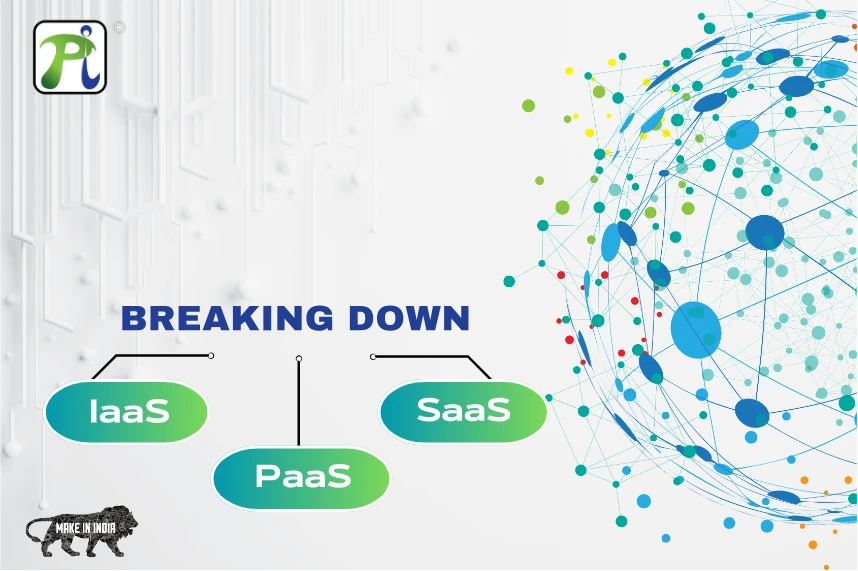We Will Get Back To You As Soon As Possible


We know that Cloud computing can be quite complex and involves understanding Infrastructure as a Service (IaaS), Platform as a Service (PaaS), and Software as a Service (SaaS) to fully grasp its implications and advantages. Being familiar with these three models is crucial for businesses to effectively leverage their benefits. Cloud computing, being a revolutionary tool in the ever-changing landscape of technology, provides businesses and individuals with a versatile, expandable, and cost-effective means of accessing computing resources. The most commonly used cloud computing models revolve around Infrastructure as a Service (IaaS), Platform as a Service (PaaS), and Software as a Service (SaaS). These models offer different levels of control and flexibility for users. Together, these cloud computing models have transformed the way businesses operate by simplifying IT infrastructure management.
IaaS is a cloud computing model that allows service providers to offer virtualized computing resources over the internet, resulting in a highly efficient and scalable solution. These resources include servers, storage, networking, and operating systems. Using IaaS, users can easily build and manage their applications without worrying about the underlying infrastructure.
IaaS was first introduced in 2006 by Amazon Web Services (AWS) with the launch of its Elastic Compute Cloud (EC2) service. Since then, it has gained significant popularity, with major players like Microsoft Azure, Google Cloud Platform, and IBM Cloud also offering IaaS services.
With IaaS, businesses have the flexibility to adjust their resources as required, eliminating the need for costly hardware investments. In addition, IaaS providers take care of the maintenance and upgrades to the infrastructure, enabling businesses to concentrate on their core operations. In general, IaaS offers businesses the necessary flexibility and control to swiftly adjust to evolving market demands and maintain a competitive edge. It is a popular choice among businesses for a range of purposes, such as web hosting, application development, and data storage. It provides a high level of flexibility, scalability, and cost savings, as users are only charged for the resources they utilize. Nevertheless, effectively managing and maintaining the infrastructure demands a considerable amount of technical expertise.
The future of IaaS appears to be quite promising, as industry experts anticipate a significant growth rate of 22.6% from 2021 to 2028. This growth is expected to be driven by the increasing adoption of cloud computing and the need for businesses to quickly scale their operations.
PaaS is a cloud computing model in which the service provider provides a platform for developers to create and deploy their applications without having to concern themselves with the underlying infrastructure. Introduced in 2006 by Google, it made its debut alongside the Google App Engine. Since then, it has become increasingly popular, with major players such as Microsoft Azure, AWS, and IBM Cloud also providing PaaS services.
PaaS provides a comprehensive set of tools, libraries, and frameworks to facilitate application development. This enables developers to concentrate on coding and developing groundbreaking solutions rather than dealing with server management and infrastructure. Platform as a Service (PaaS) provides a multitude of advantages, including faster time-to-market, enhanced flexibility, and significant cost savings. Using PaaS, developers have the ability to effortlessly collaborate, seamlessly integrate third-party services, and effortlessly scale their applications to meet their requirements. In the near future, there is strong anticipation for substantial growth in the PaaS industry. This is due to the increasing emphasis placed by businesses on the importance of flexibility and effectiveness in their software development procedures. The outlook for PaaS is highly optimistic, as industry projections indicate a robust compound annual growth rate of 23.4% between 2021 and 2028. This growth is expected to be driven by the increasing adoption of cloud computing and the growing need for businesses to rapidly develop and deploy applications.
SaaS is a cloud computing model in which software applications are provided by the service provider via the internet. These applications can be accessed using a web browser or a thin client, and users are required to pay a subscription fee in order to utilize them. This model offers a hassle-free and budget-friendly solution for businesses, as it eliminates the requirement for users to install and manage software on their own devices. SaaS made its debut in the late 1990s, when Salesforce.com entered the scene.

Since then, it has become widely popular, with major industry leaders such as Microsoft Office 365, Google Workspace, and Dropbox also providing SaaS services. It has become increasingly popular because of its ability to scale, adaptability, and user-friendly interface. It is a popular choice among businesses and individuals for a wide range of purposes, such as email, document editing, and project management. Given the increasing demand for software solutions, it is anticipated that the SaaS market will experience significant growth in the near future. This growth will be driven by technological advancements and the growing dependence on remote work. The market is projected to experience a significant growth rate of 20.9% from 2021 to 2028. This growth is expected to be driven by the increasing adoption of cloud computing and the growing need for businesses to quickly access software applications.
Infrastructure as a Service (IaaS) offers virtualized computing resources; Platform as a Service (PaaS) provides a development platform for applications; and Software as a Service (SaaS) delivers software applications via the internet. These three categories illustrate distinct levels of cloud computing services. When it comes to infrastructure resources such as virtual machines and storage, IaaS takes the spotlight. On the other hand, PaaS provides developers with a platform to effortlessly create, test, and launch applications. However, SaaS offers convenient software applications that can be easily accessed online, eliminating the need for installation or upkeep. Every category in the cloud computing ecosystem has a distinct purpose, meeting the diverse needs and requirements of businesses.
The decision relies on your specific business requirements and level of technical proficiency. Infrastructure as a Service (IaaS) provides unparalleled flexibility and control; Platform as a Service (PaaS) offers a remarkable level of abstraction; and Software as a Service (SaaS) delivers unparalleled convenience and cost savings. In determining the most suitable cloud computing model for your business, it is crucial to consider your unique requirements. If your business is in need of a high level of flexibility and control over its infrastructure, opting for IaaS might be the most suitable decision. Alternatively, if you lean towards a more abstract approach and prioritize application development and deployment, Platform as a Service (PaaS) might be the perfect choice for you. Finally, if you prioritize convenience and cost savings, SaaS might be the perfect choice for you. It eliminates the need for installation or maintenance and offers easily accessible online software applications.
Cloud computing can be made secure by implementing the necessary security measures. However, data security and privacy may be causes for concern, particularly when it comes to SaaS. When using SaaS, users entrust their data to the cloud provider for storage and protection. This can raise concerns about potential unauthorized access or data breaches. Nevertheless, well-established cloud providers prioritize robust security measures and employ advanced encryption techniques to safeguard the confidentiality of data. Thoroughly researching and selecting a reliable and trustworthy cloud provider is crucial for organizations. This helps to mitigate potential risks and effectively address concerns related to data security and privacy.
To sum up, IaaS, PaaS, and SaaS are the three most widely utilized cloud computing models, each presenting distinct advantages and obstacles. Choosing between these models depends on your specific business requirements and level of technical proficiency. With the rapid evolution of cloud computing, these models are poised for significant growth, opening up exciting possibilities for both businesses and individuals.
Questions? We're here to help.
©2025 Pi DATACENTERS® Pvt. Ltd. All rights reserved
